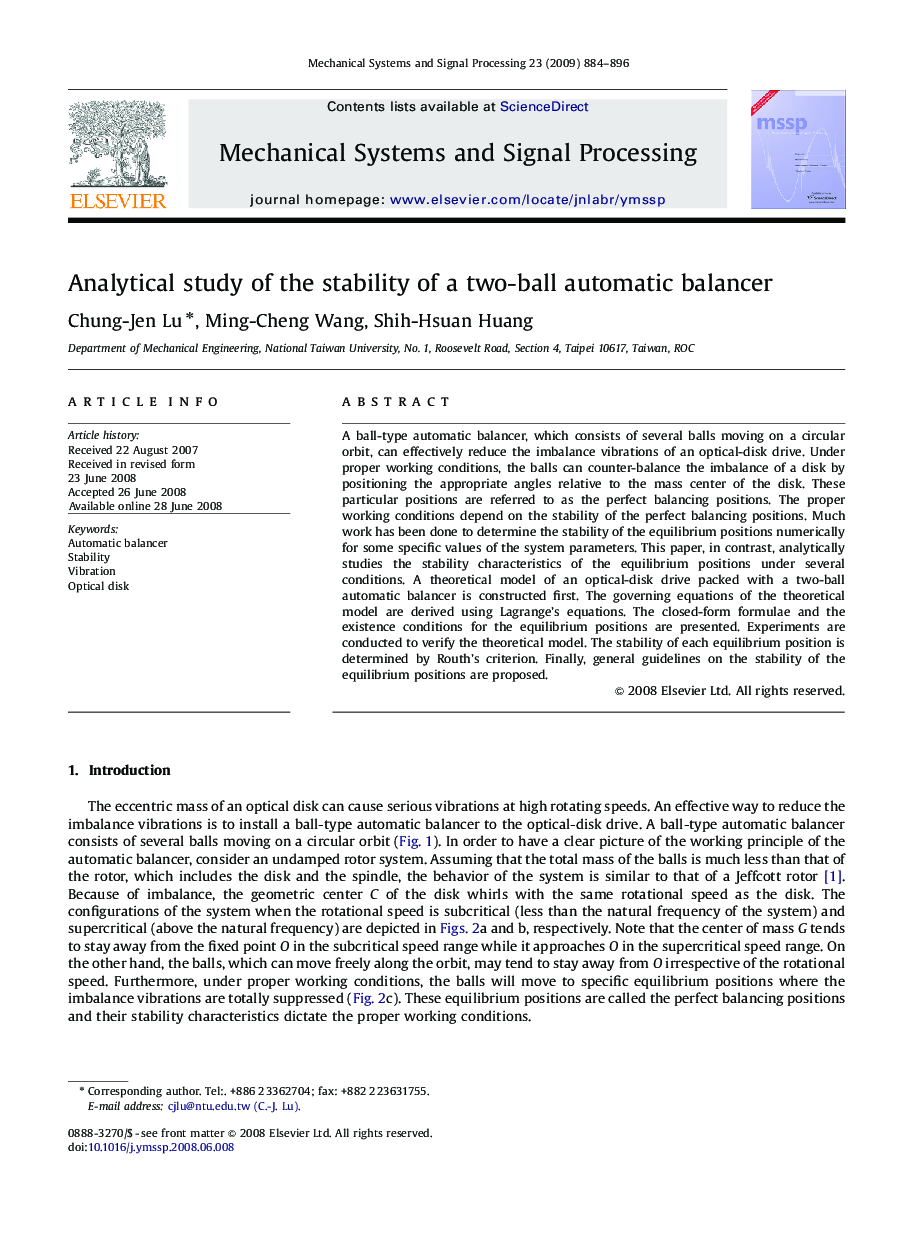| Article ID | Journal | Published Year | Pages | File Type |
|---|---|---|---|---|
| 565696 | Mechanical Systems and Signal Processing | 2009 | 13 Pages |
A ball-type automatic balancer, which consists of several balls moving on a circular orbit, can effectively reduce the imbalance vibrations of an optical-disk drive. Under proper working conditions, the balls can counter-balance the imbalance of a disk by positioning the appropriate angles relative to the mass center of the disk. These particular positions are referred to as the perfect balancing positions. The proper working conditions depend on the stability of the perfect balancing positions. Much work has been done to determine the stability of the equilibrium positions numerically for some specific values of the system parameters. This paper, in contrast, analytically studies the stability characteristics of the equilibrium positions under several conditions. A theoretical model of an optical-disk drive packed with a two-ball automatic balancer is constructed first. The governing equations of the theoretical model are derived using Lagrange's equations. The closed-form formulae and the existence conditions for the equilibrium positions are presented. Experiments are conducted to verify the theoretical model. The stability of each equilibrium position is determined by Routh's criterion. Finally, general guidelines on the stability of the equilibrium positions are proposed.
